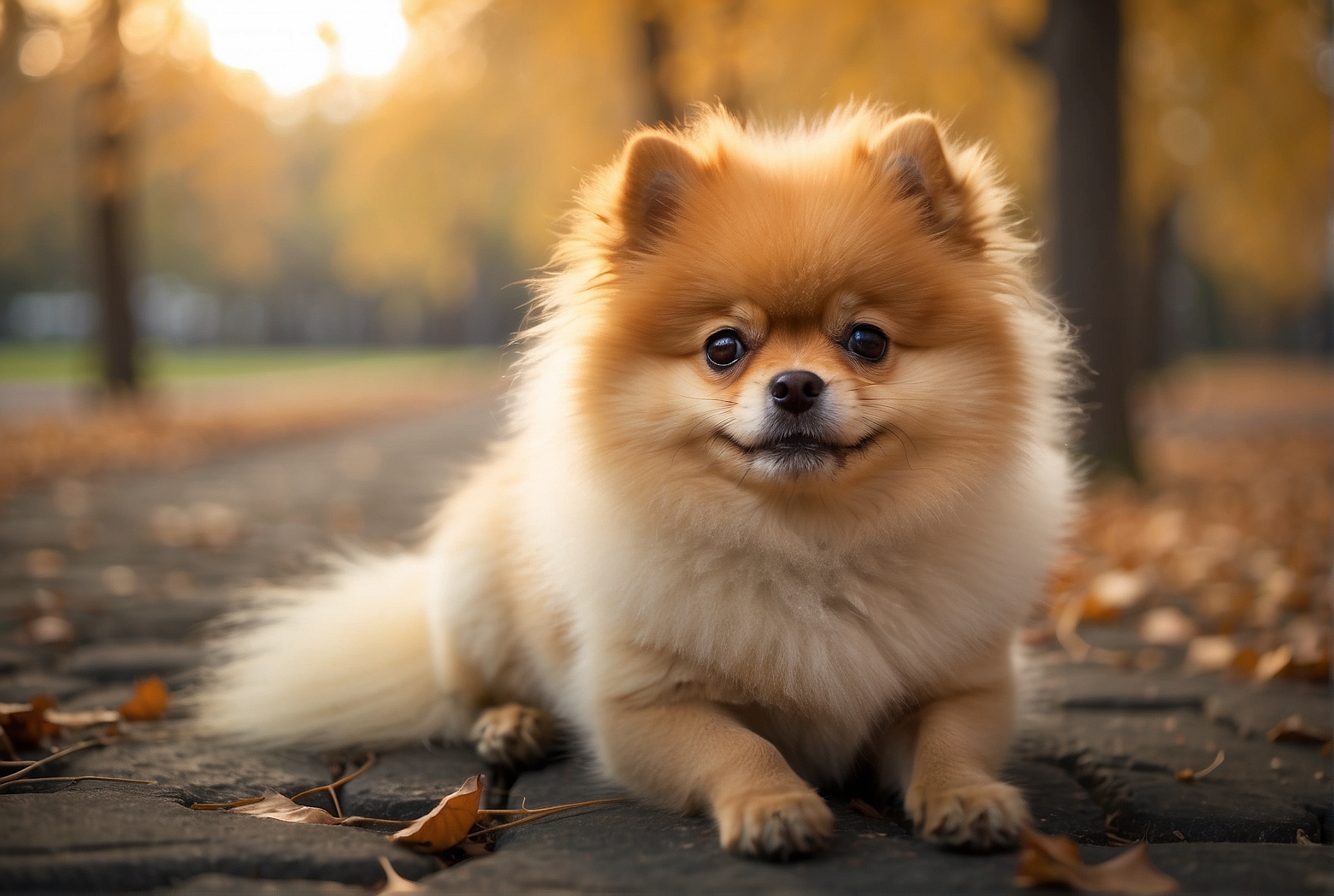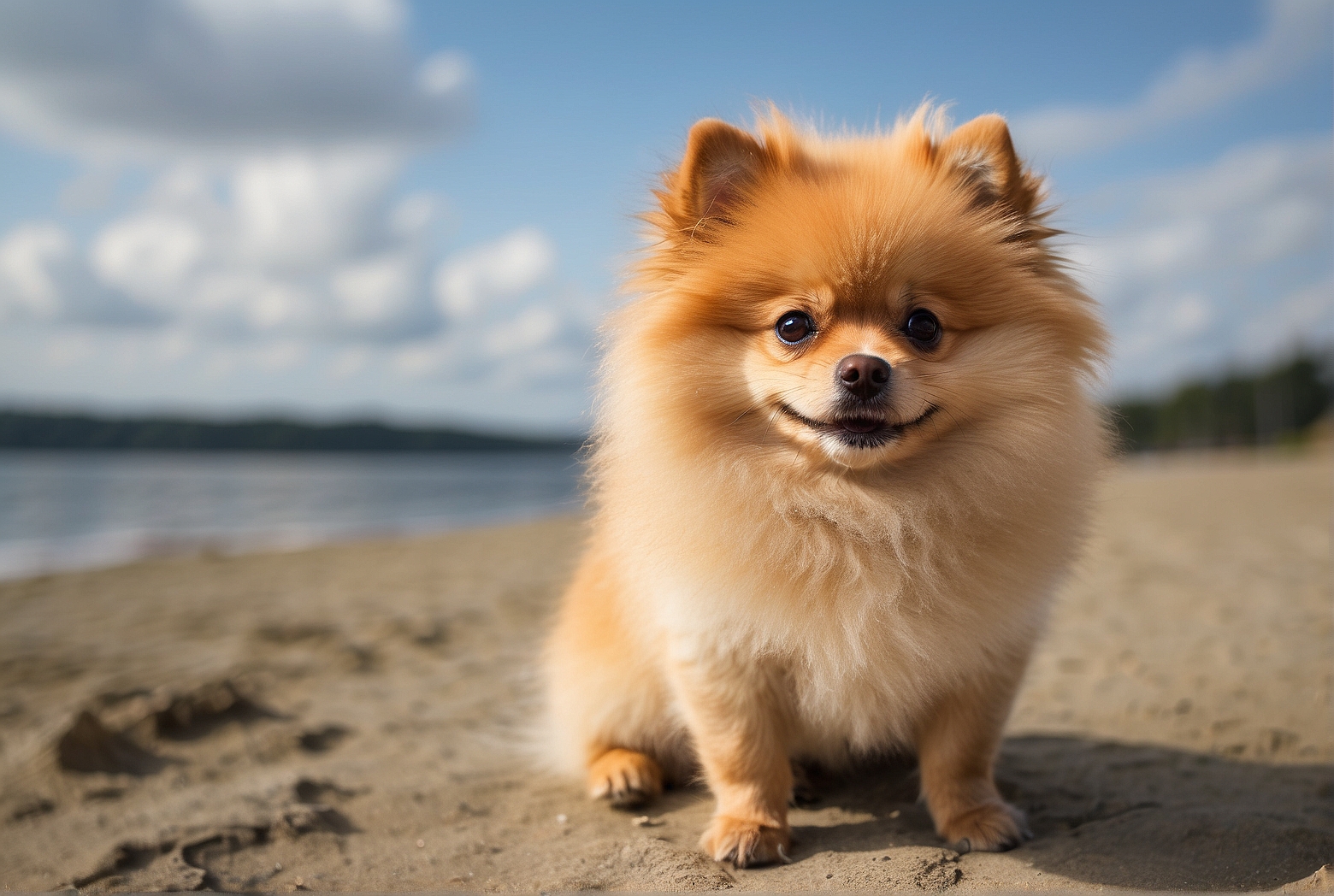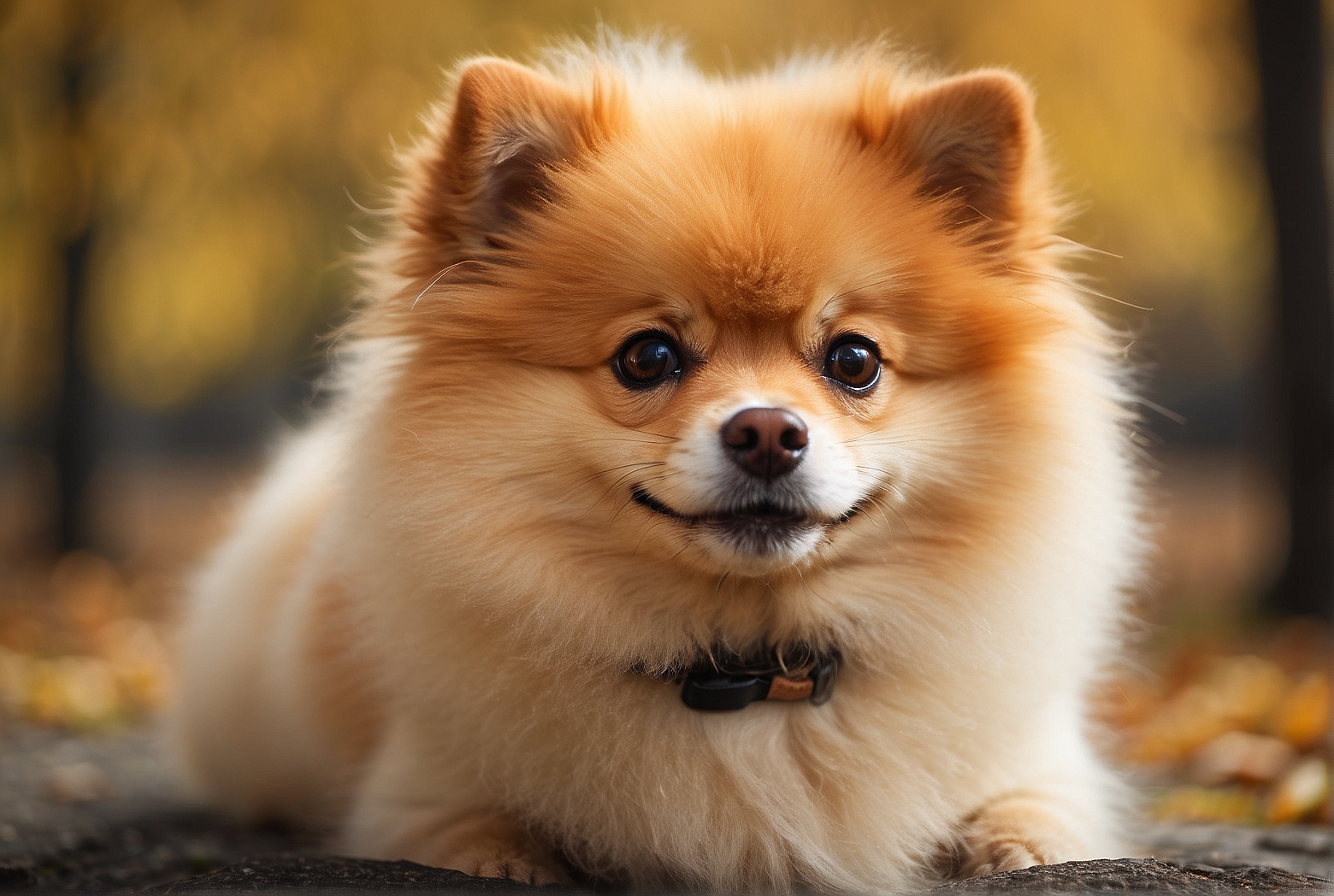If you’re a proud owner of a Pomeranian but are struggling with their aggression, fret not! In this article, we will provide you with valuable tips and techniques to train your Pomeranian to be non-aggressive. Whether it’s dealing with territorial behavior or stopping aggression towards other animals, these helpful strategies will assist you in fostering a friendly and well-behaved companion. From understanding the root causes of aggression to implementing positive reinforcement techniques, you’ll soon have a happy and harmonious relationship with your furry friend.
Understanding Pomeranian Behavior
Pomeranians are known for their lively and playful nature, but like any dog breed, they can also exhibit aggressive behaviors. Recognizing these behaviors is crucial in order to address them effectively and create a harmonious environment for both you and your furry friend. By understanding the common aggressive behaviors displayed by Pomeranians, you will be better equipped to identify the triggers that may be causing them.
Recognizing common aggressive behaviors
Pomeranians may display various aggressive behaviors, such as growling, barking, snapping, or even biting. These behaviors can be triggered by a variety of factors, including fear, territorialism, or resource guarding. It’s important to note that aggression in Pomeranians can sometimes be a result of underlying health issues, so it’s essential to rule out any medical causes before addressing the behavior.
Identifying triggers of aggression
To effectively manage and prevent aggression in your Pomeranian, it’s crucial to identify the triggers that may be causing these behaviors. Pay close attention to situations or stimuli that seem to provoke aggression in your dog. This could include encounters with unfamiliar dogs or people, being in crowded or noisy environments, or being approached while eating or playing with a favorite toy. By being aware of these triggers, you can take proactive steps to help your Pomeranian feel more comfortable and secure.
Creating a Positive Environment
To foster a non-aggressive behavior in your Pomeranian, creating a positive environment plays a significant role. By providing a safe and secure space, avoiding punishment-based training, and establishing a routine in your dog’s life, you can promote a sense of trust and stability that will help your Pomeranian feel more at ease.
Providing a safe and secure space
Creating a safe and secure space for your Pomeranian is essential in ensuring their overall well-being. This can be achieved by setting up a comfortable and cozy area designated specifically for your dog. Make sure the space is free from potential hazards, such as toxic plants or household chemicals, and that it includes a comfortable bed, toys, fresh water, and access to a bathroom area.

Avoiding punishment-based training
Punishment-based training methods can often have adverse effects on a Pomeranian’s behavior and overall temperament. Instead, opt for positive reinforcement techniques that reward good behavior. Pomeranians respond well to praise, treats, and verbal cues when they exhibit desirable behavior. By focusing on the positive and rewarding your Pomeranian for their good behavior, you can build a strong bond and encourage their non-aggressive tendencies.
Establishing a routine
Dogs, including Pomeranians, thrive on routine and structure. Establishing a consistent daily routine for your Pomeranian helps them feel secure and provides clear expectations. Set regular times for meals, potty breaks, exercise, and playtime. By adhering to a routine, your Pomeranian will feel more stable, which can prevent anxiety and reduce the likelihood of aggressive behavior.
Socializing Your Pomeranian
Socialization is a vital aspect of training your Pomeranian to be non-aggressive. Introducing your dog to new environments, people, and animals at an early age can help them develop positive associations and build confidence.
Introducing your Pomeranian to new environments
Gradually exposing your Pomeranian to new environments is crucial for their social development and to prevent fear-based aggression. Start by introducing them to low-stress environments, such as quiet parks or calm neighborhoods, and gradually progress to busier and more stimulating settings. Gradually exposing your Pomeranian to new surroundings allows them to become accustomed to different sights, sounds, and smells, reducing the likelihood of fearful or aggressive reactions.
Exposing them to various people and animals
Positive interactions with a variety of people and animals are key to socializing your Pomeranian. Introduce them to friends, family members, and other well-behaved pets in controlled settings. Encourage calm and positive interactions, rewarding your Pomeranian for good behavior. Over time, your Pomeranian will learn to feel at ease in the presence of different individuals and animals, minimizing the likelihood of aggression.
Positive Reinforcement Training
Positive reinforcement training is an effective method for shaping your Pomeranian’s behavior in a non-aggressive way. By utilizing treats, rewards, clicker training, and teaching basic commands, you can encourage your Pomeranian to exhibit desirable behavior.

Using treats and rewards
Offering treats and rewards as a form of positive reinforcement is a powerful tool in Pomeranian training. When your Pomeranian displays good behavior, such as responding to a command or displaying non-aggressive interactions, reward them with a treat or verbal praise. By consistently reinforcing positive behavior, your Pomeranian will associate good behavior with rewards, making them more likely to repeat that behavior in the future.
Clicker training
Clicker training is a popular method that uses a clicker, a small handheld device that emits a distinctive sound, to mark desired behavior. By pairing the sound of the clicker with a treat or reward, your Pomeranian will associate the click with positive reinforcement. Clicker training can be particularly effective in shaping specific behaviors or teaching complex commands.
Teaching basic commands
Teaching basic commands, such as sit, stay, and come, is an essential part of Pomeranian training. By establishing clear communication through commands, you can prevent confusion and promote good behavior. Break down each command into manageable steps, reward your Pomeranian for their progress, and be patient throughout the training process. Consistency is key in reinforcing these commands and encouraging a non-aggressive demeanor.
Redirecting Aggressive Behavior
Sometimes, despite our best efforts, a Pomeranian may display signs of aggression. It’s important to identify these signs early and redirect their behavior towards more positive and acceptable alternatives.
Identifying signs of aggression
Aggressive behavior in Pomeranians can manifest in various ways, including growling, barking, snarling, or even biting. It’s crucial to be familiar with your Pomeranian’s body language and recognize signs of stress or aggression, such as raised fur, a stiffened body posture, or a fixed stare. By identifying these warning signs early, you can intervene and redirect their behavior before it escalates.
Using distraction techniques
When you notice your Pomeranian displaying signs of aggression, it’s important to distract them from the trigger and redirect their focus onto a more positive activity. This can include offering them a favorite toy or treat, engaging them in an interactive game, or simply moving them away from the situation. By redirecting their attention, you can prevent the aggression from escalating and reinforce more desirable behaviors.
Teaching alternative behaviors
In addition to distraction techniques, teaching your Pomeranian alternative behaviors can help redirect their aggression. For example, teaching your Pomeranian to “sit” or “stay” when they feel stressed or threatened can provide them with a calming alternative to aggressive behaviors. Consistent training and positive reinforcement will help your Pomeranian understand and adopt these alternative behaviors, reducing the likelihood of aggression.
Dealing with Fear and Anxiety
Fear and anxiety are common triggers for aggression in Pomeranians. Understanding fear-based aggression and implementing strategies to manage anxiety is essential in promoting a non-aggressive behavior in your dog.
Understanding fear-based aggression
Fear-based aggression occurs when a Pomeranian perceives a threat or feels unsafe in a particular situation. Common triggers can include encounters with unfamiliar people or animals, loud noises, or certain environments. It’s important to address fear-based aggression with sensitivity and understanding, as punishing a fearful dog can exacerbate their anxiety and aggression. Instead, focus on creating a safe and secure environment, gradually exposing your Pomeranian to their fears in a controlled and positive manner.
Managing anxiety in your Pomeranian
Managing anxiety in your Pomeranian is a multi-faceted approach that includes creating a safe space, providing comfort during fearful situations, and promoting relaxation. Creating a safe space, such as a crate or a designated quiet area, where your Pomeranian can retreat when feeling anxious, can offer them a sense of security. Additionally, using calming techniques such as soothing music, aromatherapy, or pressure wraps can help reduce anxiety. Consistency, patience, and positive reinforcement are key in helping your Pomeranian overcome anxiety and minimize aggressive behavior.
Proper Exercise and Mental Stimulation
Providing your Pomeranian with regular exercise and mental stimulation is essential in preventing pent-up energy and reducing the likelihood of aggressive behavior.
Providing regular exercise
Regular exercise is crucial for a Pomeranian’s physical and mental well-being. Walks, play sessions, and other physical activities offer an outlet for your Pomeranian’s energy, helping them stay calm and content. Aim for daily exercise sessions tailored to their size, age, and fitness level. Not only will regular exercise tire out your Pomeranian, but it will also strengthen the bond between you and promote their overall happiness.
Engaging in interactive play
Interactive play sessions offer mental stimulation for your Pomeranian while reinforcing positive behaviors and providing an opportunity for socialization. Engage in activities such as fetch, puzzle toys, or hide-and-seek to keep their minds engaged and help prevent boredom. Interactive play also allows you to bond with your Pomeranian and build trust, which is essential in promoting non-aggressive behavior.
Mental stimulation activities
In addition to physical exercise, mental stimulation activities are equally important in keeping your Pomeranian’s mind sharp and preventing behavioral issues. Training sessions, puzzle toys, and interactive feeding toys are great ways to engage your Pomeranian’s brain and promote problem-solving skills. Mental stimulation activities not only tire out your Pomeranian, but they also provide a positive outlet for their energy and reduce the likelihood of aggression.
Seeking Professional Help
If you find yourself struggling to address your Pomeranian’s aggression or if their behavior becomes unmanageable, seeking professional help is a wise decision. Consulting with a dog trainer or behaviorist who specializes in working with small dog breeds can provide valuable guidance and personalized strategies to address your Pomeranian’s specific needs. They can analyze the root causes of the aggression and design a training plan tailored to your Pomeranian’s temperament and behavior.
Consistency and Patience
Consistency and patience are key when training your Pomeranian to be non-aggressive. It’s important to understand that behavior change takes time and effort. By consistently implementing positive reinforcement techniques, redirecting aggressive behavior, and providing a safe and secure environment, you can gradually shape your Pomeranian’s behavior and foster a non-aggressive demeanor.
Understanding the importance of consistency
Consistency in training is essential for your Pomeranian to understand what is expected of them. Use clear and consistent commands, reward good behavior consistently, and maintain a consistent daily routine. By providing clear expectations and consistent reinforcement, your Pomeranian will learn to trust you and understand what behaviors are desirable.
Being patient with your Pomeranian
Patience is a virtue when it comes to training any dog, including Pomeranians. It’s important to remember that dogs learn at different paces and may require more time to adapt to new behaviors. Be patient with your Pomeranian and avoid getting frustrated or resorting to punishment. Training should be a positive experience for both you and your furry friend, so maintain a calm and patient attitude throughout the process.
Conclusion
Training a Pomeranian to be non-aggressive requires understanding their behavior, identifying triggers, and creating a positive environment. By recognizing common aggressive behaviors, providing a safe and secure space, socializing your Pomeranian, using positive reinforcement training, redirecting aggression, managing fear and anxiety, providing proper exercise and mental stimulation, seeking professional help when needed, and maintaining consistency and patience, you can help your Pomeranian develop a non-aggressive demeanor. Remember, every dog is unique, and training methods may vary. With dedication, love, and the right approach, you can successfully train your Pomeranian to be a well-behaved and non-aggressive companion.
